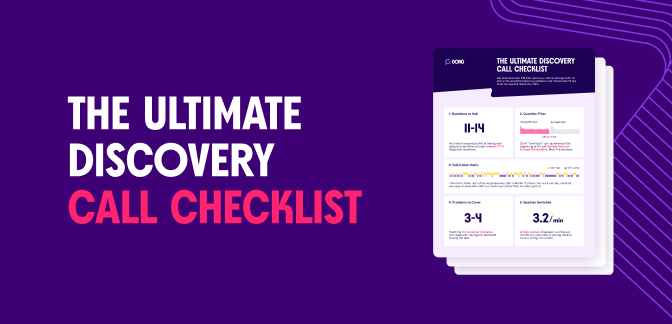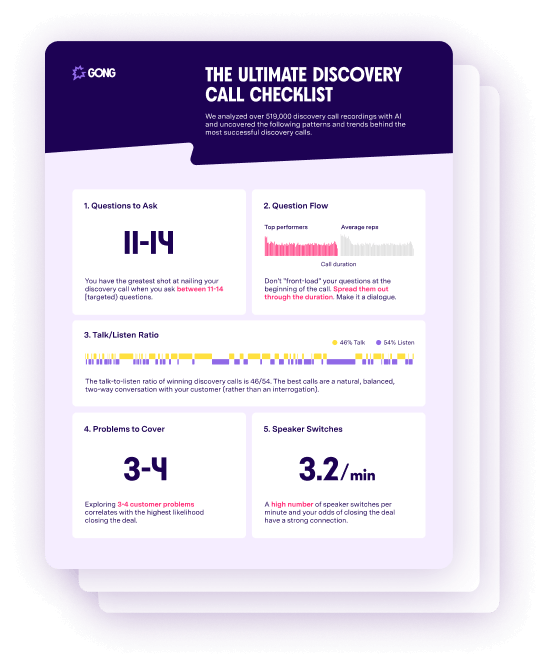guide
The ultimate discovery call checklist
We analyzed more than 519,000 recordings to uncover the formula that top sellers use to run their discovery calls. These secrets are all revealed in this discovery call checklist – get it now to fast-track high-fit buyers through your sales cycle.

Discovery calls just got a lot more productive
Join the more than 12,000 successful sales professionals who are closing more deals with this discovery call checklist.
Loading form...
